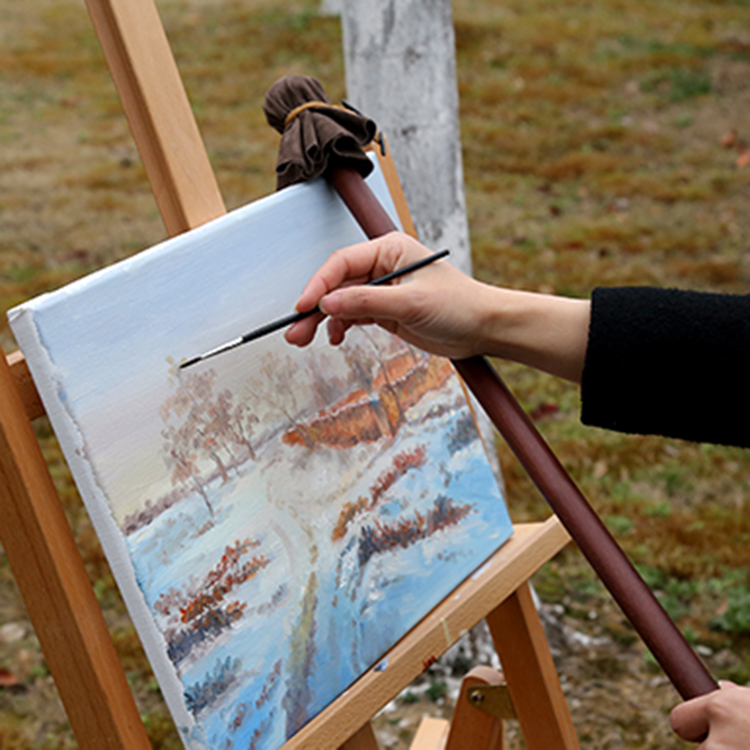We are very satisfied with the product received. Thanks to perfect and professional Honswill.
—— Maurizio
I was a little worried, but arrived as promised! supplier service was outstanding!
—— Echevarria
Product was good quality and as expected. Shipping was slower than expected, however, they kept us informed and it was acceptable.
—— Morten Freksen,
- I'm Online Chat Now
Company News
Oil painting steps

To draw a good oil painting, you can refer to the following steps and tips:
- Decide on a theme and idea:
Define the subject matter, style, color, and composition of the picture.
This helps provide clear guidance for the next steps.
- Sketches & Rubbing:
Sketches, line drawings, and coloring drafts based on ideas.
This step helps to concretize the idea and provides a reference for subsequent coloring.
- Coloring and grading:
Choose the right pigment and color palette for coloring.
Pay attention to the matching of colors and the coordination of tones to ensure a harmonious transition between colors.
- Master the techniques of oil painting:
Transparent thin painting method: It is suitable for expressing the texture and thickness of objects, such as the delicate color changes of human skin.
Opaque impasto: Commonly used in the visual center of the picture and the bright parts of objects, it can produce a strong visual effect.
Eclectic painting method: Combining transparent thin coating and opaque impasto techniques, transparent thin coating on dark parts and opaque impasto painting on bright parts, suitable for a variety of scenes.
Transparent Painting: An ancient and traditional technique that creates a third color by over-dyeing with a deep and jewel-like sheen.
- Hierarchy and Detailing:
In the process of coloring, pay attention to the layering and detail processing of the picture.
By processing the relationship between the pictures many times, the layers and textures of the pictures are expressed.
- Drying and trimming:
Once the painting is complete, place it in a ventilated place to dry.
After drying, it is trimmed and details are processed, such as correcting lines, emphasizing colors, and adjusting brightness.
- Pay attention to care and preservation:
After the oil painting is completed, it is necessary to pay attention to maintenance and preservation to avoid damage caused by direct sunlight, moisture and dust.
You can gently wipe the dust with a slightly damp clean cloth, and if there is oil smoke, you can use light soapy water and water to gently scrub and quickly absorb the water.
- Keep practicing and learning:
Oil painting skills require constant practice and learning to improve.
You can continue to learn and improve by reading relevant books, watching videos, and taking drawing classes.
In short, painting well requires a clear theme and conception, mastery of oil painting techniques, attention to layers and details, and continuous practice and learning. Through continuous practice and exploration, you can gradually improve the level of oil painting.To draw a good oil painting, you can refer to the following steps and tips:
Decide on a theme and idea:
Define the subject matter, style, color, and composition of the picture.
This helps provide clear guidance for the next steps.
Sketches & Rubbing:
Sketches, line drawings, and coloring drafts based on ideas.
This step helps to concretize the idea and provides a reference for subsequent coloring.
Coloring and grading:
Choose the right pigment and color palette for coloring.
Pay attention to the matching of colors and the coordination of tones to ensure a harmonious transition between colors.
Master the techniques of oil painting:
Transparent thin painting method: It is suitable for expressing the texture and thickness of objects, such as the delicate color changes of human skin.
Opaque impasto: Commonly used in the visual center of the picture and the bright parts of objects, it can produce a strong visual effect.
Eclectic painting method: Combining transparent thin coating and opaque impasto techniques, transparent thin coating on dark parts and opaque impasto painting on bright parts, suitable for a variety of scenes.
Transparent Painting: An ancient and traditional technique that creates a third color by over-dyeing with a deep and jewel-like sheen.
Hierarchy and Detailing:
In the process of coloring, pay attention to the layering and detail processing of the picture.
By processing the relationship between the pictures many times, the layers and textures of the pictures are expressed.
Drying and trimming:
Once the painting is complete, place it in a ventilated place to dry.
After drying, it is trimmed and details are processed, such as correcting lines, emphasizing colors, and adjusting brightness.
Pay attention to care and preservation:
After the oil painting is completed, it is necessary to pay attention to maintenance and preservation to avoid damage caused by direct sunlight, moisture and dust.
You can gently wipe the dust with a slightly damp clean cloth, and if there is oil smoke, you can use light soapy water and water to gently scrub and quickly absorb the water.
Keep practicing and learning:
Oil painting skills require constant practice and learning to improve.
You can continue to learn and improve by reading relevant books, watching instructional videos, and taking drawing classes.
In short, painting well requires a clear theme and conception, mastery of oil painting techniques, attention to layers and details, and continuous practice and learning. Through continuous practice and exploration, you can gradually improve the level of oil painting.


 En
En


